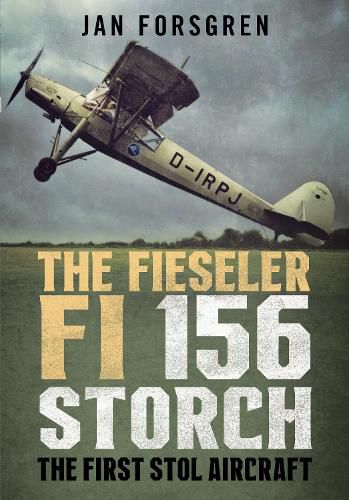Readings Newsletter
Become a Readings Member to make your shopping experience even easier.
Sign in or sign up for free!
You’re not far away from qualifying for FREE standard shipping within Australia
You’ve qualified for FREE standard shipping within Australia
The cart is loading…






First flown in May 1936, the Fieseler Fi 156, or, as it was better known, Storch (Stork), was designed in answer to a request from the German Luftwaffe for a short range reconnaissance aircraft. For its time, the Fi 156 had amazing performance and flight characteristics, what today is known as STOL (Short Take-Off and Landing). It could take-off from a lawn considerably smaller than a football field. During the Second World War, the ubiquitous Storch was the airborne eyes of the German Wehrmacht (Army), also being used on daring rescue missions, including the rescue of the Italian dictator Mussolini. The last flight out of Berlin was made in a Storch. Many were sold to Germany’s allies, while one was used by Churchill after D-Day to observe the progress of the invasion. Others were used by the RAF as squadron ‘hacks’, with one being flown off an aircraft carrier. The STOL concept was copied by many countries, including France, Japan and the USSR. Post-war, production continued in Czechoslovakia, France and Romania, with more than 3,000 being built. Some are still flying.
$9.00 standard shipping within Australia
FREE standard shipping within Australia for orders over $100.00
Express & International shipping calculated at checkout
First flown in May 1936, the Fieseler Fi 156, or, as it was better known, Storch (Stork), was designed in answer to a request from the German Luftwaffe for a short range reconnaissance aircraft. For its time, the Fi 156 had amazing performance and flight characteristics, what today is known as STOL (Short Take-Off and Landing). It could take-off from a lawn considerably smaller than a football field. During the Second World War, the ubiquitous Storch was the airborne eyes of the German Wehrmacht (Army), also being used on daring rescue missions, including the rescue of the Italian dictator Mussolini. The last flight out of Berlin was made in a Storch. Many were sold to Germany’s allies, while one was used by Churchill after D-Day to observe the progress of the invasion. Others were used by the RAF as squadron ‘hacks’, with one being flown off an aircraft carrier. The STOL concept was copied by many countries, including France, Japan and the USSR. Post-war, production continued in Czechoslovakia, France and Romania, with more than 3,000 being built. Some are still flying.